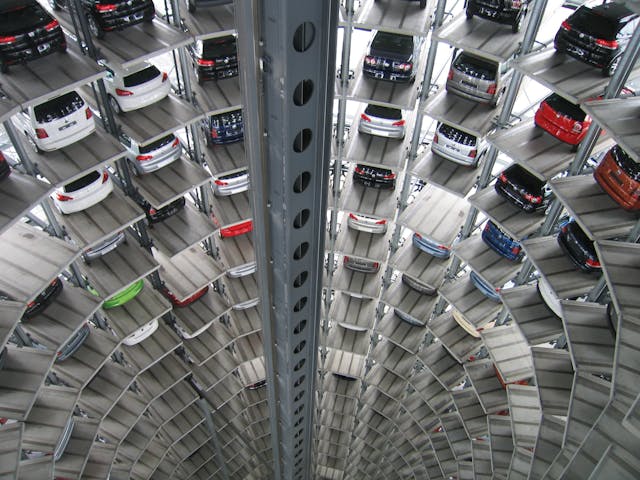Thinking about storing your car but unsure what the monthly bill might look like? You’re not alone. The truth is, costs aren’t always as straightforward as they seem. Some people walk in expecting a flat fee, only to find out prices swing widely depending on where you live, the type of storage, and the size you need.
That’s why it’s helpful to understand monthly car storage pricing in a clear, practical way. Once you know what drives the costs, whether it’s indoor versus outdoor space, city demand, or extra features, you can set a budget that makes sense. In this guide, we’ll walk through those factors and share tips for keeping costs reasonable.
Why Do Car Storage Costs Vary So Much?
Here’s the thing, there isn’t a single “one-size-fits-all” price for car storage. Costs shift based on three main factors:
- Storage type: Outdoor lots cost less, while indoor or climate-controlled units cost more.
- Location: Urban areas usually charge higher fees than rural spots.
- Size and features: A compact car in a basic space will be cheaper than an SUV stored in a climate-controlled unit with 24/7 security.
Think of it as booking a hotel room. You can stay in a budget motel, a mid-range hotel, or a luxury suite. Each protects you from the elements, but the level of comfort (and cost) is very different.
The good news? Once you know what options exist, the numbers start making sense. That’s exactly what we’ll look at next, the different types of storage you can choose from.
What Types of Car Storage Are Available?
Not every car storage option is built the same, and the type you pick has the biggest impact on your bill. Here are the common choices:
- Outdoor Parking Spaces ($50–$100/month)
Cheapest option. You’ll get a designated spot, usually in a fenced lot. Good for short-term or budget-friendly needs.
- Covered Storage ($100–$150/month)
Think of this as a carport. It shields your vehicle from sun and rain, though not fully enclosed.
- Indoor Storage Units ($150–$250/month)
Enclosed garage-style units. Better security and full protection from the weather. Great for long-term storage.
- Climate-Controlled Units ($250+/month)
Premium storage for classic cars or luxury vehicles. It protects against humidity, extreme heat, or cold.
Which one makes sense for you depends on your car’s value, how long you plan to store it, and your budget. If you just need a safe spot for a few months, outdoor might do. But if you’re storing a collectible car for years, indoor or climate-controlled is worth every penny.
Of course, even within these types, prices shift depending on where you live.
How Much Does Location Affect Storage Prices?
Location can easily double or even triple the cost of car storage. A unit in downtown Los Angeles will almost always cost more than the same unit in a small-town facility. Why? Demand.
- Urban areas: Limited space, high demand = higher prices.
- Suburbs: More balanced pricing. Good if you’re willing to drive a little.
- Rural towns: Often the most affordable, but less convenient.
Regional factors matter, too. Coastal cities may charge more due to weather risks, while places with harsh winters often have higher demand for indoor or climate-controlled storage.
In short, location isn’t just about convenience, it directly impacts your wallet. But even within the same city, size matters just as much.
How Does Unit Size Influence Your Monthly Cost?
The size of the unit is another major cost factor. Here’s a breakdown of common sizes:
- 10×15 unit ($120–$160/month): Fits most small cars or compacts.
- 10×20 unit ($150–$200/month): The most common choice for sedans and mid-size SUVs.
- 10×30 unit ($200–$300/month): Designed for large trucks, vans, or even small RVs.
If you’re unsure, measure your car and ask the facility which size works best. Paying for a unit that’s too large is like renting a two-bedroom apartment for just you and your dog, you’ll be paying for space you don’t actually need.
Still, size is only part of the picture. The features a facility offers can nudge the price up or down, too.
Do Amenities and Security Really Impact the Price?
Yes, amenities and security matter, and they do affect your monthly rate. Here are some common add-ons:
- 24/7 access: More convenience, often a bit more cost.
- Gated entry with PIN codes: Standard at most modern facilities.
- Video surveillance: May increase pricing slightly but adds peace of mind.
- On-site staff/security patrols: Higher security level, usually higher fee.
- Climate control: Adds the most to monthly rates.
Think of it this way: would you rather pay $30 extra a month or risk thousands in repairs if your car gets damaged or stolen? Sometimes the extra cost is the cheapest form of insurance.
Once you weigh storage type, location, size, and features, the next question is: What’s a fair budget?
What’s a Realistic Monthly Budget for Car Storage?
Let’s put the pieces together. Here’s a ballpark of what you might expect:
- Outdoor parking: $50–$100/month
- Covered storage: $100–$150/month
- Indoor storage: $150–$250/month
- Climate-controlled unit: $250+ per month
So, what’s “realistic” for you depends on your car, your needs, and your city. A college student storing a beater for summer break probably won’t spend more than $100. Someone with a vintage Corvette might happily pay $300+ for climate-controlled protection.
Here are a few budgeting tips:
- Shop around: Prices vary widely between facilities.
- Prioritize features: Only pay for what you really need.
- Ask about promotions: Many facilities run seasonal or first-month deals.
Knowing the average prices is a good start. But if you’re serious about saving money, there are tricks that can shave off even more from your monthly bill.
How Can You Save on Car Storage Costs?
You don’t always have to pay top dollar. Here are smart ways to cut your costs:
- Pick a suburban location: Driving a few extra miles can save you $50–$100 monthly.
- Book long-term; Many facilities offer discounts for 6–12 month commitments.
- Skip unnecessary features: If your car’s not a collectible, you may not need climate control.
- Check for seasonal deals: Winter often has lower demand in warmer states.
- Consider shared storage: If allowed, splitting a larger unit with a friend can lower costs.
The key is balancing savings with security. Saving $40 a month isn’t worth it if your car is sitting in a poorly lit, unsecured lot.
Rad More: Comparing Lupus and Rheumatoid Arthritis: Key Differences
Now that we’ve walked through costs, sizes, and savings, let’s wrap it all up.
Conclusion
Car storage isn’t as mysterious as it first seems. Once you look at the factors, type of storage, location, unit size, and extra features, the monthly costs start to make sense. The key is deciding what matters most for your car and your budget.
For some, a simple outdoor spot is enough. For others, paying more for indoor or climate-controlled space is worth the peace of knowing their vehicle is fully protected. Either way, you now have a clear picture of what to expect each month. And if you’re considering a standard option, it’s common to rent a 10×20 storage unit in Detroit at a fair rate.



